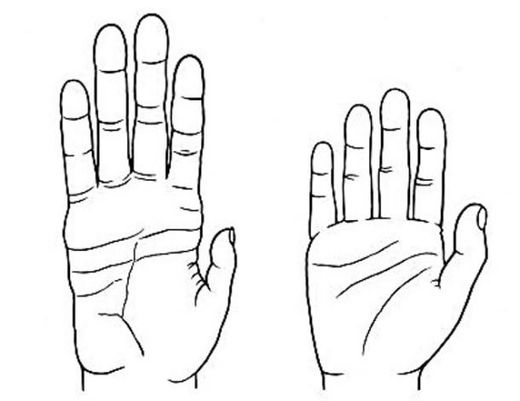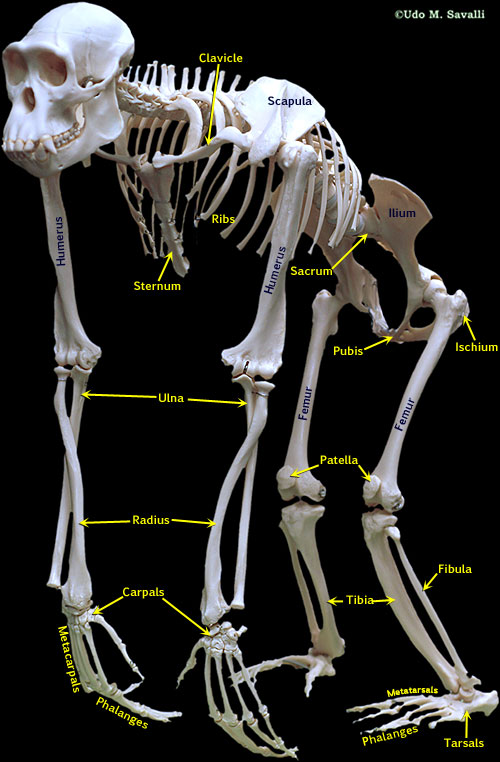

Human limb proportions are an extreme opposite. In addition to their specialized hands, feet, and short rigid lower backs, modern great apes have long arms and short legs that contribute significantly to their remarkable arboreal agility.

The chimpanzee hand, unlike that of the especially mobile hand and wrist of Ardipithecus, is highly derived. Ardipithecus, Australopithecus, and modern humans lack these. Chimpanzees have massive ligaments and structural enhancements of their articular surfaces that firmly and almost rigidly reinforce their palm and digits. The central bone (capitate) of the chimpanzee midcarpal joint demonstrates a smaller range of motion than in Ardipithecus. The primary thumb flexor is reduced and sometimes absent (instead, its tendon often joins that to the second ray) ( 22). Their heads bear distinct articular expansion and grooving, the latter induced by a lifetime of KW. Extant African ape ray two to five metacarpals are long, especially in chimpanzees.
Anatomy of chimpanzee hand manual#
Living African apes have evolved manual adaptations for sustained below-branch suspension and regular climbing on varied vertical supports, and for quadrupedal KW. Many predicted that pre- Australopithecus hands would be increasingly chimpanzee-like ( 21). This primate therefore illuminates human and chimpanzee origins in ways that Australopithecus never could.Įxpectations influenced by the phylogenetic proximity of humans and chimpanzees led some to posit KW “traits” in early Australopithecus ( 20).

However, Ardipithecus was one of the few surviving lineages of the Miocene ape adaptive radiation: it preserved fundamental arboreal adaptations and it exclusively shares several independent character complexes with all later hominids. The condition’s symptoms range from post hoc cautionary advice ( 9) to speculation ( 10) or inexplicable omission ( 11). Perhaps because Ardipithecus was so suddenly revealed in so many dimensions of context and anatomy-and is so different from Australopithecus-a form of “cognitive dissonance” settled over some practitioners of paleoanthropology. In contrast, the Ardipithecus niche was comprehensively revealed in ∼250 published pages of a single issue of Science in 2009 ( 8). Broader aspects of Australopithecus paleobiology emerged gradually during the 20th century. Ardipithecus is a primate that ruptures several deeply held perceptions, particularly those visualizing humans as “just a third species of chimpanzee” ( 7).


 0 kommentar(er)
0 kommentar(er)
